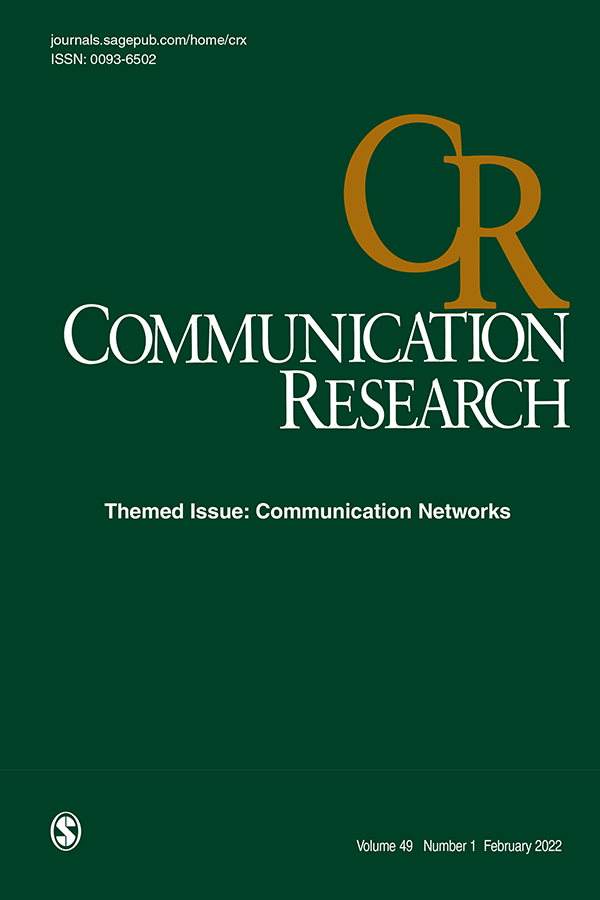Testing the Communication During Sexual Activity Model: An Examination of the Associations among Personality Characteristics, Sexual Communication, and Sexual and Relationship Satisfaction
IF 4.9
1区 文学
Q1 COMMUNICATION
引用次数: 0
Abstract
Preliminary evidence suggests that communication during and after sexual activity is linked to positive sexual and relational assessments, but the process of communication during sexual activity (i.e., predictors and outcomes of such behavior) has yet to be explicated. As such, the current study puts forth the Communication During Sexual Activity model, which posits that one’s propensity for affectionate communication, sexual self-esteem, and sexual assertiveness predict verbal communication during sexual activity, which in turn is associated with sexual and relationship satisfaction. Within a sample of emerging adults, structural equation modeling revealed that sexual self-esteem and trait affection were positively associated with communication during sexual activity. However, sexual assertiveness did not significantly predict communication during sexual activity. Communication during sexual activity was also positively associated with sexual satisfaction, and indirectly associated with relationship satisfaction through sexual satisfaction. The implications of the findings for future sexual communication research and interventions are addressed.测试性活动中的沟通模式:人格特征、性沟通、性和关系满意度之间的相关性研究
初步证据表明,性活动期间和之后的沟通与积极的性评估和关系评估有关,但性活动期间的沟通过程(即这种行为的预测因素和结果)尚未阐明。因此,目前的研究提出了性活动中的沟通模型,该模型假设一个人的深情沟通倾向、性自尊和性自信预测了性活动期间的言语沟通,而言语沟通又与性和关系满意度有关。在一个新兴成年人的样本中,结构方程模型显示,性自尊和特质情感与性活动中的沟通呈正相关。然而,性自信并不能显著预测性活动中的交流。性活动中的沟通也与性满意度呈正相关,并通过性满意度间接与关系满意度相关。研究结果对未来性传播研究和干预措施的影响也得到了解决。
本文章由计算机程序翻译,如有差异,请以英文原文为准。
求助全文
约1分钟内获得全文
求助全文
来源期刊

Communication Research
COMMUNICATION-
CiteScore
17.10
自引率
0.00%
发文量
20
期刊介绍:
Empirical research in communication began in the 20th century, and there are more researchers pursuing answers to communication questions today than at any other time. The editorial goal of Communication Research is to offer a special opportunity for reflection and change in the new millennium. To qualify for publication, research should, first, be explicitly tied to some form of communication; second, be theoretically driven with results that inform theory; third, use the most rigorous empirical methods; and fourth, be directly linked to the most important problems and issues facing humankind. Critieria do not privilege any particular context; indeed, we believe that the key problems facing humankind occur in close relationships, groups, organiations, and cultures.
 求助内容:
求助内容: 应助结果提醒方式:
应助结果提醒方式:


